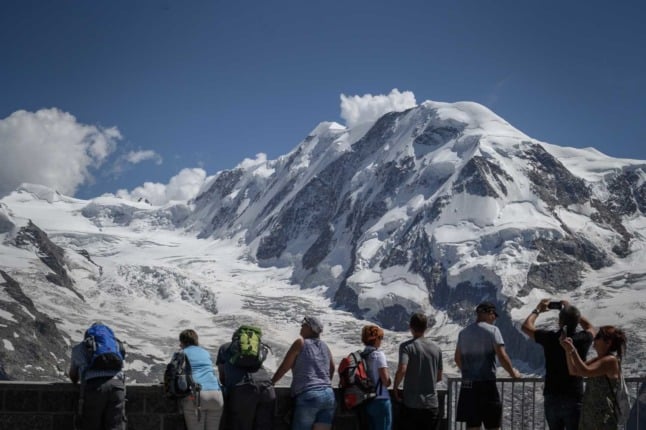Mountaineers who stumble across archaeological relics revealed by retreating glaciers in the Swiss Alps can now use a new app to log the location and help preserve their findings.
The southwestern Wallis region said Tuesday the IceWatcher mobile phone application should help them collect and store glacial finds as quickly as possible.
Wallis contains several important glaciers, including the Aletsch, the largest in the Alps.
Due to global warming, glaciers are releasing relics of up to thousands of years, the Wallis cantonal authorities said in a statement.
“Preserved and isolated by ice, these elements are particularly fragile as soon as they are released.
“The cold preserves certain organic material in a remarkable way, but once out of this protective covering, the relics start degrading, which can quickly lead to their disappearance.”
Glaciers in the Swiss Alps are in steady decline, losing a full two percent of their volume last year alone, according to the Swiss Academies of Science.
READ MORE: Swiss hold high-altitude ‘funeral march’ for lost glacier
And even if the 2015 Paris Agreement calling for global warming to be capped at two degrees Celsius were to be implemented, two-thirds of Alpine glaciers will likely be lost, according to a 2019 study by the ETH technical university in Zurich.
Amid surging temperatures, glaciologists predict that 95 percent of the 4,000 Alpine glaciers could disappear by the end of this century.
While archaeologists lament the devastating toll of climate change, many acknowledge it has created an opportunity to dramatically expand understanding of mountain life millennia ago.
Mountaineers with mobiles
The Wallis cantonal archeological office (OCA) is developing tools for tracking objects released by melting glaciers. But given the sheer “impossibility” of monitoring the whole surface area, the region is calling on the help of mountaineers with mobiles.
“Most discoveries are not made by archaeologists,” Romain Andenmatten, archaeologist and scientific officer at the Wallis OCA, told AFP. He estimated there were five to 10 discoveries of glacial archeology per year, of varying interest.
The free-to-download app’s home screen tells users not to touch anything they find. Then they select the type of object discovered, take a close-up photo with a comparable object for scale and a wider shot of the landscape indicating where the object was found.
Along with geolocation data, the information will be compiled and the OCA will then assess the relevance of the findings and get to work on collecting and conserving them.
The app is currently only used by the Wallis OCA, but Andenmatten stressed they would pass on any findings reported elsewhere. He also hoped it app could eventually be used everywhere to log new discoveries.




 Please whitelist us to continue reading.
Please whitelist us to continue reading.
Member comments